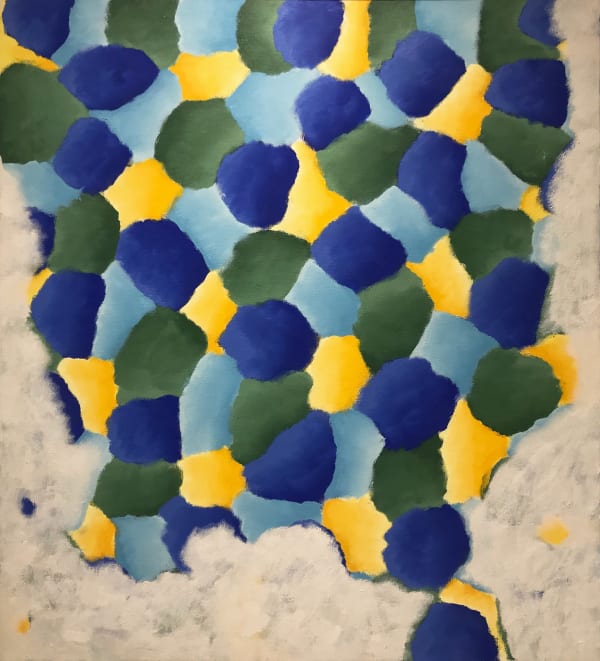Gershon Iskowitz Canadian, 1921-1988
“My paintings are not abstract, they are real, they are very very much real, I see those things…I paint what I see.”
– Gershon Iskowitz
Gershon Iskowitz was a painter and draughtsman born in the village of Kielce, Poland. A temperamental child, Iskowitz held a strong interest in art, which his family supported. A favourite childhood pastime was watching films. In order to afford the tickets, Iskowitz developed a barter system with the local movie-house manager, exchanging drawings of matinee idols for free admission.
In 1939, Iskowitz’s uncle submitted a portfolio of his work to the Warsaw Academy of Fine Art. However, Iskowitz was never able to attend the Academy, as the Nazis invaded Poland on September 1, 1939. Iskowitz and his brother were sent to work in a Nazi-operated factory building wheel spokes for the German Army. In 1942, at the age of 18, Iskowitz was sent to the Auschwitz concentration camp. Two years later he was transferred west to the Buchenwald concentration camp.
While a prisoner in the camps, Iskowitz would use ingenuity to locate drawing materials and sketch late into the night, always being sure to hide his drawings come morning. He would often volunteer to clean rubble from allied bombing attacks in the hopes of finding food or art supplies amongst the destroyed shops. The paper and watercolors used to create Condemned were found in such a way. In total Iskowitz would spend six years interned in Nazi concentration camps, emerging at the age of 23. After the liberation on April 11, 1945 Iskowitz was sent to recuperate at a hospital near Munich. Two years later he began formal art studies at the Munich Academy of Art, as well as private studies with the Austrian artist Oskar Kokoschka. In 1949 Iskowitz immigrated to Canada and settled in Toronto.
Post-war, Iskowitz’s work was heavy with the memories of his experiences and this then led to a period where he focused on the portrait and figure. However, from the mid-1960s onward, Iskowitz’s main inspiration was the Canadian landscape. A 1967 helicopter trip to view Canada’s Northern Territories was a turning point for his landscapes, after which his paintings developed into topographical abstracts.
To support his artistic practice Iskowitz taught art classes first at the Holy Blossom Temple and then from 1967 – 1970 at the New School in Toronto. In 1972 he represented Canada at the Venice Biennial. Two years later he was elected a member of the Royal Canadian Academy. In 1977 he was awarded a medal in honor of the Queen’s Silver Jubilee. He would go on to establish the Gershon Iskowitz Foundation and the Gershon Iskowitz Prize, in association with the Canada Council for the Arts.




